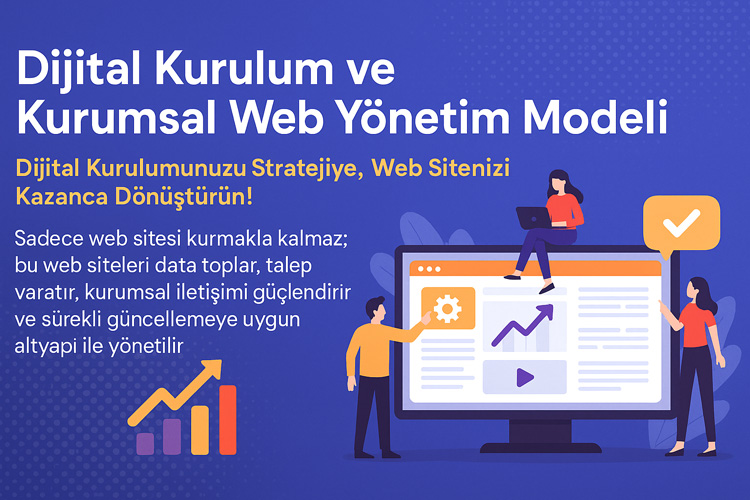If your website doesn’t have a “privacy policy,” you’re not only facing a legal gap; you’re also facing a serious deficiency that undermines customer trust. Visitors won’t trust you without knowing how their data is processed and with whom it’s shared. Especially in today’s increasingly competitive digital world, transparency and legal compliance are no longer a choice, but a necessity.
📉 User complaints like “I turned off the cookie warning, but the site still has tracking!” are now turning directly into a KVKK complaint form.
Most businesses think they can solve their privacy policy with a “just copy and paste” method. However, every industry, every website, every data processing model has its own unique responsibilities. Writing an incomplete disclosure text, not obtaining explicit consent from the user, and not specifying data sharing with third parties… Each of these are risks of non-compliance that could lead to a fine.
⚠️ The majority of fines issued under the KVKK in 2024 alone were based on incomplete or invalid privacy policies.
In this article, we will explain step by step how to create a legally compliant, user-friendly, SEO- and AEO-enabled privacy policy for your website. In line with our Form-97 structure; We will first raise awareness, then offer solutions, and then guide you to action.
🚀 Before you hear the question, “Are your data processing processes ready for audit?”, read this article and take precautions!

İçindekiler
ToggleWhy Do You Have to Prepare a Privacy Policy?
Many businesses view a privacy policy as a “formality.” However, this text is the most critical trust protocol in the digital relationship with users. In particular, processes such as the collection, storage, and sharing of personal data with third parties must be disclosed in accordance with both legal regulations and user expectations. KVKK, GDPR, and other data protection laws can impose administrative fines on websites that lack a clearly defined privacy policy. Not only laws, but also search engines, mobile app stores, and advertising platforms have begun to reject sites without a privacy policy.
Beyond this, transparency and security have become not just a preference in the digital world, but a fundamental expectation. Visitors are now searching for answers to questions like, “Is this site tracking me?” and “Who is my data being sent to?” A clear and accessible privacy policy not only protects you from fines but also enhances your corporate reputation and increases customer loyalty. Remember, 70% of visitors avoid shopping on sites where they don’t understand how their data is processed.
🔍 “Leaving a question mark in your user’s mind or gaining their trust?” The decision is yours.
Why is a Privacy Policy a Legal Obligation?
KVKK, GDPR, and similar data protection laws require businesses to clearly and comprehensibly disclose their data collection processes. The most important of these disclosures is the privacy policy. Any website that doesn’t disclose which user data is shared, for what purpose, for how long, and with whom is considered legally deficient and carries a high risk of being audited.
Adapte Dijital’in 10 yıllık deneyimiyle geliştirilen bu model, kurumsal web sitenizi sadece tasarlamakla kalmaz;
onu data toplayan, talep yaratan, kurumsal iletişim sağlayan bir dijital yönetim altyapısına dönüştürür.
Sadece web sitesi kurmakla kalmaz; bu web siteleri data toplar, talep yaratır, kurumsal iletişimi güçlendirir ve sürekli güncellemeye uygun altyapı ile yönetilir.
Is Your Website at Risk Without a Privacy Policy?
Yes. Especially on sites that involve transactions such as e-commerce, form filling, member registration, and newsletter subscription, the absence of a privacy policy can lead to heavy fines and user complaints. What’s more, ad platforms and security filters may blacklist such sites.
⚠️ “Without the privacy policy, your Google Ads campaign may be rejected.”
Do Visitors Really Read the Privacy Policy?
Yes, at least they check it. Users click the “privacy policy” link, especially before reaching the checkout page. Having this text be clear, simple, and professional directly impacts conversion rates.
📊 “When the privacy policy is readable, cart abandonment rates decrease by 15%.” (Source: Adapte Dijital, 2025)
Why Do Search Engines and Platforms Care About Privacy Policy?
Platforms like Google, Apple, and Meta scan your website’s privacy policy page to assess its legal compliance. Especially for mobile apps, apps without a privacy policy are not published on the App Store and Google Play.
🔍 “A privacy page is essential for SEO and app visibility.”
What Should You Consider When Preparing a Privacy Policy?
When writing a privacy policy, simply copying a template isn’t enough. Because every business’s data collection, processing, and sharing processes are different. Therefore, the text should be both original, transparent, and compliant with legislation. The biggest mistake is creating text that doesn’t clearly explain to the user what data is being collected, how it’s being stored, and with whom it’s being shared. However, users are looking for clear and honest information: “What do you know about me, and what will you do with it?” Any policy that doesn’t answer this question creates risks.
Furthermore, the privacy policy should be user-friendly, not technical. Complex sentences, legal jargon, and abstract expressions should be avoided; it should be explained in simple language, bullet points, and, when necessary, with examples. The user should not only read it, but also understand it. This approach aligns perfectly with both the explicit consent principle of the KVKK and the transparency principle of the GDPR.
📌 “If your policy makes sense, you gain trust. If it’s not understood, you lose users.”
Clearly State Your Data Collection Purposes
The most critical information that should be included in a privacy policy is which data is being collected and for what purpose. Data such as email, IP address, and purchase history are not only collected but also analyzed. The reason for this process should be clearly stated: for example, “to improve customer experience,” “to send campaign notifications,” etc.
If Sharing with Third Parties, Explain It
If your data doesn’t reside solely on your system (for example, if it’s shared with advertising platforms, analytics tools, or shipping companies), this must be stated in the privacy policy. Users’ biggest concern is that their data will be transferred to other companies without their knowledge.
Retention Period and Deletion Requests Should Be Specified
The length of time collected data will be stored and whether users can request deletion of this data should be clearly stated. According to the Personal Data Protection Law (KVKK), users always have the right to delete or update their data.
🗃️ “How long do you store it?” A clear answer to the question should be provided.
Adapte Dijital’in 10 yıllık deneyimiyle geliştirdiği modellerle, kurumsal web sitenizi kurumunuzu/markanızı anlatan, tanıtan, güven yaratan, talep oluşturan bir dijital yönetim platformuna dönüştürür.
Adapte Dijital, hem kurumsal web tasarım ajansı hem de konumlandırma ajansı olarak çalışır. Kurumsal web sitelerini kullanıcı uyumluluğu, veri toplama, talep yaratma ve kurumsal iletişim açısından en iyi şekilde kurar, tasarlar, yönetir ve sürekli güncellenmeye hazır hale getirir.
Keep the Policy Accessible and Up-to-Date
The privacy policy should be presented with a clear link on your site’s homepage, payment form, or during registration. This text should also be reviewed at least once a year, and any changes should be updated. Texts that were “written in 2020 but never touched” undermine trust and create auditing problems.
How to Write a Privacy Policy? Step-by-Step Preparation Process
Preparing a privacy policy is a critical step not only for fulfilling a legal obligation but also for brand credibility. However, many businesses either leave this text incomplete or use ready-made templates. However, a well-structured privacy policy is the content that conveys the clearest message to the user: “I respect your data.” This process: It includes steps such as creating a data inventory, defining a purpose, technical explanation, and specifying user rights.
Especially for businesses operating in the digital world, this policy should not only be a legal document but also a strategic document. In the increasingly competitive digital world, users are now “buying not just products, but also trust.” The more transparent, understandable, and comprehensive your policy is, the higher your conversion rate will be.
🔍 “A website without a privacy policy is like a building with insufficient security.”
1. Start with a Data Inventory
The first step in preparing a privacy policy is knowing what data you collect. Name, surname, email, IP address, location information, behavioral data… You should create a data inventory for all of them and clarify the source and purpose of processing for each.
🧾 As a data controller, without an inventory, the policy text will be in limbo.
2. Specify the Purposes for Which Data is Collected
Your data may be collected for many purposes, such as marketing, analytics, customer relations, or legal obligations. It’s important to clearly state these purposes in the policy. Instead of abstract terms like “for general use,” concrete terms like “to improve customer support quality” should be preferred.
3. Clearly State User Rights
According to the Personal Data Protection Law, every user has the right to be informed, correct, delete, and object. These rights should be stated individually in the privacy policy in plain language. How users can access these rights and the contact address they can use to make their requests should be clearly stated.
✉️ The question “What rights do I have?” should be answered in this area.
4. Contact Information and Policy Updates
At the end of your policy, you should include the contact channels (email, phone, address) that users can reach to exercise their rights. Additionally, up-to-dateness should be emphasized with the statement “this policy was last updated on this date,” and it should be noted that the user will be notified of any changes.
Where and How Should Your Privacy Policy Page Be Presented?
Simply writing the privacy policy isn’t enough; it must be presented in the right place, in the right format, and clearly to the user. Many websites simply include this important document in the footer and leave it at that. However, users’ ability to exercise their privacy rights depends not only on a link but also on accessibility, transparency, and proper positioning. Your website’s privacy policy page should be located in areas visible to users when they first arrive, and should be integrated with all areas that collect data, such as cookie banners, membership forms, and email consent forms.
Moreover, it shouldn’t just exist as a page; access to the content should also technically work seamlessly across mobile, desktop, and other devices. If users can’t quickly access this policy, or if they can’t read it, this not only indicates a lack of experience but also indicates a non-compliance with the Personal Data Protection Law (KVKK). Offering a double-tiered access model on your website, meaning multiple access opportunities via both a page and a popup or link, makes a difference.
📌 Remember: The privacy policy shouldn’t be “hidden”; it should be “secure” to the user.
Where Should the Privacy Policy Link Be?
The most common and correct method is to clearly display the privacy policy link in the website’s footer. However, this isn’t enough. This link should also be visible when creating an account, subscription forms, or confirming email marketing. In particular, the “I have read and accept the privacy policy” box must be placed before the “sign up” buttons.
Should It Be Integrated with Cookie Banners?
Absolutely yes. Cookie banners should obtain explicit consent from the user and also include a direction to the privacy policy. If the user wants to know which cookies they accept, they can read the privacy policy for details. This link should generally appear as “More information” or “View our privacy policy” and should not mislead the user.
🔐 Transparency is achieved not only through text but also through presentation.
What to Consider for Mobile and Desktop Access?
Responsive design is also vital for your privacy policy page. If a user cannot read the content when opening the page on a mobile device, this directly indicates an accessibility violation. Page titles, text sizes, clickable areas, and links should be structured to fit the user experience on both mobile and desktop devices.
Should We Provide Policy Update Notification?
Yes, according to the KVKK, the user must be notified if the privacy policy has been updated. A note stating “This policy was last updated on XX” should be added at the top or bottom of the policy page on the website, and the user should be notified of any significant changes via email, pop-up, or notification.
📣 If your privacy policy changes, change it transparently, not silently.
Build Trust with Your Privacy Policy: The Power of Control, Transparency, and Compliance
When users enter a website, they aren’t just looking for products or content; they also want to feel safe. This is where a privacy policy represents the first step in establishing trust between your brand and the user. Companies that respect privacy and openly declare this not only comply with legal obligations like the KVKK (Personal Data Protection Law) but also gain digital loyalty. This policy specifies how personal data is collected, processed, and protected. This way, users can have peace of mind knowing how their data is used.
It’s a huge misconception to view a privacy policy solely as a legal obligation. With increased user awareness, this document has become a criterion of trust. Especially in sectors like e-commerce, healthcare, education, and finance, visitors are increasingly drawn to companies that ensure the security of their data. If your policy is transparent, users have control, which directly impacts conversion rates. Furthermore, this policy acts as a shield, protecting you from serious penalties in the event of audits and violations. 📌
Many organizations create their privacy policies using a “copy-and-paste” approach. However, an effective and compliant privacy policy should be specific to your company’s data processing processes, cookie usage, third-party collaborations, and retention periods. Therefore, you should use content specifically structured for your needs, not ready-made text. Furthermore, this policy is not static, but dynamic, requiring periodic updates. This way, you can remain compliant with both changing regulations and your digital infrastructure.
In today’s competitive digital environment, earning user loyalty is not only possible by offering a good product but also by respecting privacy. At Adapte Dijital, we provide privacy policy design that not only ensures legal compliance but also enhances user experience and trust.
Does Your Privacy Policy Appear Transparent?
The most fundamental value of a privacy policy is its transparency and understandability. Users should be able to easily read this text and avoid being overwhelmed by complex legal jargon. The policy should clearly state what data is collected, for what purpose it is used, and with whom it is shared. Instead of using vague phrases or generalized terms, explanations should be consistent with the company’s own processes. ✅ Transparency reinforces user trust in the brand and increases conversion rates.
Is It Compatible with Your Disclosure Text?
The privacy policy should be consistent with the disclosure text. The disclosure text is the document that directly informs the individual, while the privacy policy is a more general document typically located within the website or app. Ensuring there are no conflicts between these two documents ensures consistency in both legal controls and the user experience. Especially in cases where explicit consent is obtained, the data categories and sharing details of both texts should be compatible. 🧩 Compliant documentation strengthens your hand during an audit.
Do You Give the User Real Control?
Your privacy policy should not only be informative but also give the user control. It should clearly state that users have the right to view, update, delete, or stop the processing of their personal data. It should also clearly explain how to do this. Access requests should be processed quickly and securely via a form or email. 🛠️ Providing real control puts you ahead of the competition.
Is Your Policy Up-to-Date and Being Followed?
Many websites publish their privacy policies once and then leave them unchanged for years. However, regulations, technology, and data processing processes are constantly changing. Therefore, it’s important to keep your privacy policy up-to-date and communicate any changes to your users. Furthermore, your policy shouldn’t just exist on paper; it should align with all processes implemented in the field. 🔄 An up-to-date and active policy isn’t just a document; it’s a compliance strategy.






